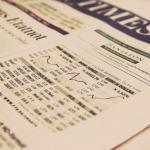The Tell: Fed’s shrinking of balance sheet via quantitative tightening is ‘a complete mistake,’ says Mizuho

The Federal Reserve’s attempt at shrinking its balance sheet through so-called quantitative tightening, or QT, is “a complete mistake,” according to Mizuho’s chief economist for the U.S.
“There is a nontrivial probability that market liquidity will be adversely affected well before the targeted $2 trillion has been rolled off, preventing the Fed from accomplishing its goal,” said Steven Ricchiuto, U.S. chief economist at Mizuho, in a note Monday. The Fed is letting its bond holdings, which includes U.S. Treasurys, roll off under quantitative tightening while also raising its benchmark interest rate as a primary tool to fight high inflation in the U.S.
The Fed’s balance sheet had expanded to around $9 trillion during the pandemic after the central bank embarked on a bond-buying program known as quantitative easing, which included the purchase of U.S. Treasurys, to help provide market liquidity as the COVID-19 crisis struck.
“Bank liabilities expand to meet the reserve balances in the system and the Fed’s own analysis suggests these liabilities are not easily trimmed when the Fed lets its balance sheet run off,” Ricchiuto wrote. “Moreover, the historical experience with how the system functions in an ample reserve framework is exceptionally limited and equating QT to rate hikes appears to be the wrong approach.”
In late October, Treasury Secretary Janet Yellen warned at a securities industry conference that the economic backdrop was “dangerous and volatile,” even as she stressed that the U.S. economy was “healthy” and described the financial system as “resilient.” Yellen remarked at the time that “we are very focused on the Treasury market,” saying “it’s critically important that it is a deep, liquid well-functioning and serving as a benchmark for all other assets.”
The Fed said in its financial stability report early this month that the $24 trillion Treasury market had recently been experiencing low levels of market liquidity. John Williams, president of the Federal Reserve Bank of New York, warned in mid-November that liquidity problems in the Treasury market have the potential to impede the Fed’s ability to transmit monetary policy to the economy.
According to Yellen’s remarks last month, President Joe Biden’s administration was working across agencies to pursue policies that could shore up liquidity in the U.S. government debt market. She also said she didn’t see a market problem at the time.
Mizuho’s Ricchiuto said in his note Monday that quantitative easing, which involves the Fed buying bonds such as Treasurys, “is unlikely to be reinitiated given the ongoing struggle with inflation.” By contrast, “in 2018-2019, deflation and secular stagnation were the key concerns for policy makers,” he wrote.
The Fed began hiking rates in March to combat high U.S. inflation that surged in the wake of the COVID-19 crisis. Inflation soared amid supply-chain disruptions tied to COVID as well as unprecedented monetary and fiscal stimulus that was designed to help the economy through the crisis sparked by the pandemic.
Read: Fed’s Brainard: Even countries that hiked interest rates ahead of U.S. didn’t avoid high inflation
Following Russia’s invasion of Ukraine, “the Fed was also quick to shift gears,” Ricchiuto said, with the Federal Open Market Committee adopting “a restrictive policy” that has left the central bank’s terminal rate “a key unanswered question.”
“Because monetary policy works with a lag, and underlying economic demand has remained relatively resilient, the terminal rate has become a moving target,” according to the Mizuho note.
That’s why the Fed “has adopted a data-dependent approach to rate hikes,” with FOMC members searching for “the level that will correct the imbalance between the supply and demand for labor,” Ricchiuto said. “Our read on the data suggest that at 5%, the forward structure of rates is still well short of the likely final peak in short-term rates this cycle.”
Ricchiuto also raised concern that investors may be too eager to look beyond the Fed’s monetary tightening after seeing signs of inflation weakening in October.
“The desire of market participants to look past the tightening to the eventual easing is simply increasing the probability that rates will need to go higher and stay there longer for the Fed to achieve the necessary and sufficient conditions for reversing its restrictive approach,” he said.
Read: The Fed will likely need to keep interest rates above 5% into 2024 to succeed in taming inflation, Bullard says
The Fed’s next policy meeting is scheduled for Dec. 13-14.
Meanwhile, the yield on the 10-year Treasury note
TMUBMUSD10Y, 3.688%
finished unchanged at 3.701% on Monday, according to Dow Jones Market Data. But so far in 2022, 10-year yields remained up about 2.2 percentage points, rising as the Fed hiked rates this year.
U.S. stocks have been hurt by rising rates in 2022, with the S&P 500
SPX, -1.54%
down 16.8% through Monday. The S&P 500 closed 1.5% lower Monday, while the Dow Jones Industrial Average shed 1.4% and the Nasdaq Composite
COMP, -1.58%
dropped 1.6%, according to Dow Jones Market Data.